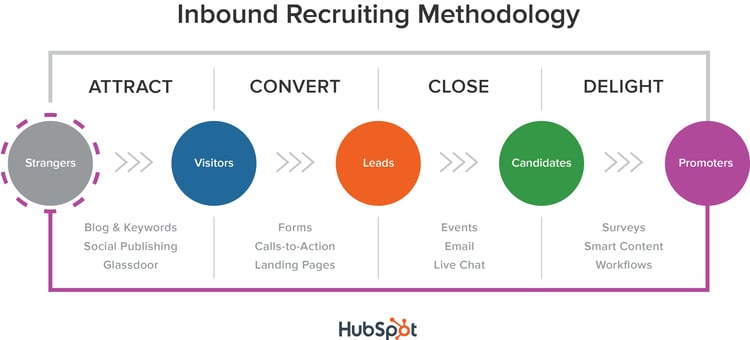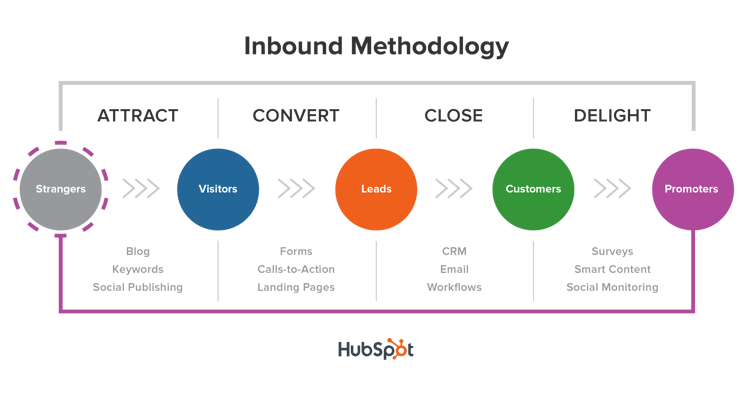
What is Inbound Recruiting?
How your company can attract, engage, and hire top talent today.
Talent is a Business Priority...
...But Recruiting Has Changed
What is Inbound Recruiting?
Major Themes
Content Creation
Lifecycle Marketing
Multi-Channel
Integration
Culture-Driven
Inbound Marketing Meets Recruiting
Today, tens of thousands of businesses globally use inbound marketing to grow and delight their customers. That's why the original inbound playbook is the blueprint for inbound recruiting.
The graphic above shows the four stages of inbound marketing. (Learn more about each stage here.) In the recruiting world, instead of attracting, engaging, and delighting customers, the goal is to attract, engage, and delight your candidates. Borrowing from the inbound methodology, below is the inbound recruiting methodology featuring the four stages of a candidate’s journey, and the interactions they can have with your employer brand along the way. (Note the tools are listed under the action where they first come into play, but that’s not the only place they’re applicable! Several tools, like events and Glassdoor, can be essential in several stages of the methodology.)

When looking at this graphic, think about your company’s candidate experience at each stage. How do job seekers first find out about your company? Maybe you have a careers blog that pulls your audience in, social media content that gets you on passive candidates' radars, or an up-to-date Glassdoor page. Once someone has visited your jobs site for the first time, are there opportunities for them to engage and interact? Subscribing to a careers blog or signing up for your talent network are examples of converting that interest into action.
Applying for a job is a big decision, so nurturing relationships with leads who have shown interest in your company is important. Emailing your leads helpful content about your culture and application process, inviting them to recruiting events, or giving them the opportunity to talk to someone at your company through live chat are all ways to provide value in the decision-making process.
Lastly, how can you turn candidates into promoters? Creating a remarkable interview and application experience, asking for feedback via surveys, and giving candidates who don't receive an offer the opportunity to stay in touch are steps to creating a community that will refer friends to your company or re-apply in the future.
